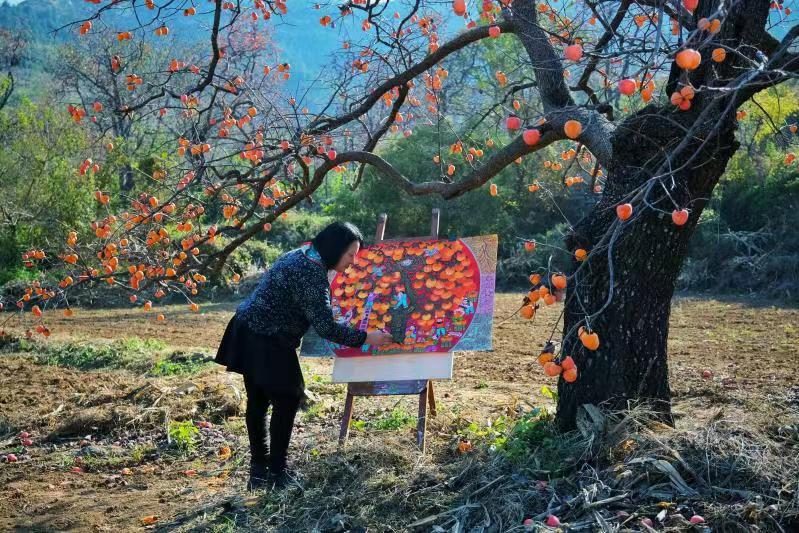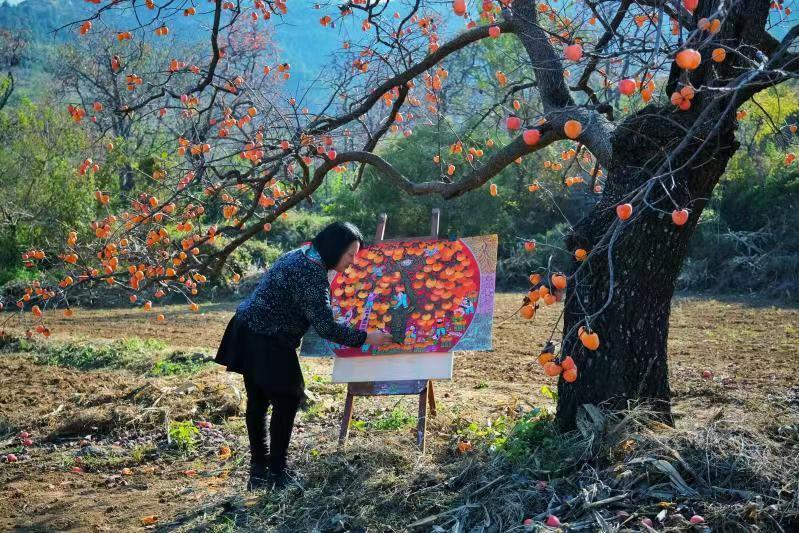
Photo shows a local farmer is painting in a persimmon garden in Qingzhou, east China's Shandong Province.
BEIJING, Nov. 15 (Xinhua) -- Peasant painting has become an important force to develop the painting and calligraphy industry, enrich rural culture, increase farmers' incomes, and promote rural revitalization in Qingzhou, a county-level city in east China's Shandong Province.
As one of the important birthplaces of peasant paintings in China, Qingzhou has been actively developing the industry in recent years. It encourages and guides local farmers to learn and create such paintings by providing them with free training and other ways.
Zhang Zilong, who has been physically disabled since childhood and used to live by farming, has taken the opportunity and become a beneficiary of peasant paintings.
"In the past, I could only earn more than 2,000 yuan a year just by farming. Since I took part in the peasant painting training in the city, I have become better and better at painting and can even teach others in the village. Now I have my own company, and I'm making more and more money, and my life is getting better and better," Zhang said proudly.
Qingzhou is actively exploring a market-oriented path for developing peasant paintings, with the development of the industry increasingly improving and the "peasant paintings plus" development mode driving the revitalization of rural industries and talents, introduced Yang Liping, head of the Qingzhou Peasant Paintings Association.
So far, Qingzhou has provided peasant painting training for 18,000 people, and held more than 300 peasant painting exhibitions, added Yang.
At present, the Qingzhou Peasant Paintings Association has 2,080 members and a merchandise turnover of more than 40 million yuan.
As a traditional painting form that has been handed down for a long time, peasant painting has not only opened up a new way for farmers to increase their income, but also become a new way to beautify the countryside.
With concise brushwork, rich and full colors, vivid artistic elements and in a pleasing form, farmer artists have presented houses, fields, farmers and labor scenes on the walls of local villages.
According to Ma Jiqing, an inheritor of intangible cultural heritage of Qingzhou peasant paintings and also a native farmer, drawing on the walls can bring 30,000 to 50,000 yuan a year to them.
In 2015, 2016 and 2018, the Qingzhou Peasant Painting Academy held peasant painting exhibitions respectively in France, the United States and the Republic of Korea which had been widely recognized by domestic and foreign art circles.
(Edited by Gu Shanshan with Xinhua Silk Road, gushanshan.1987@163.com)




 A single purchase
A single purchase









